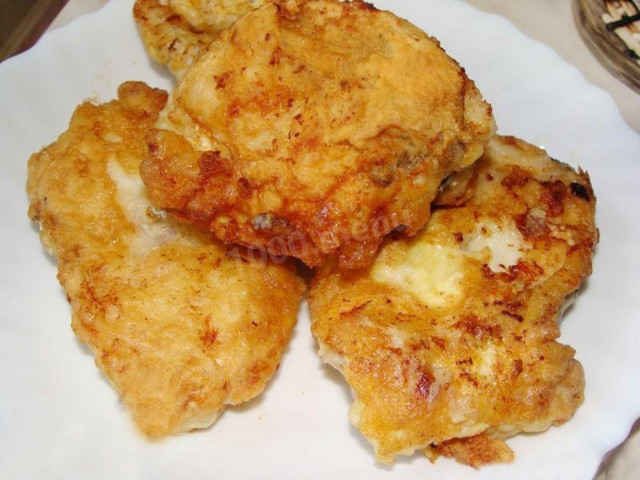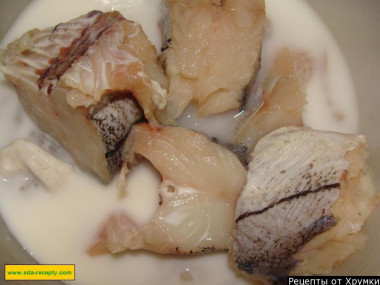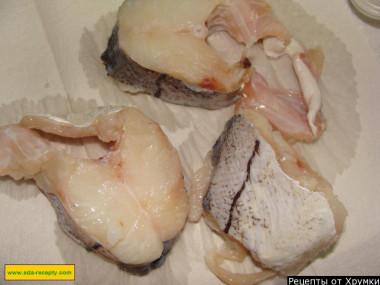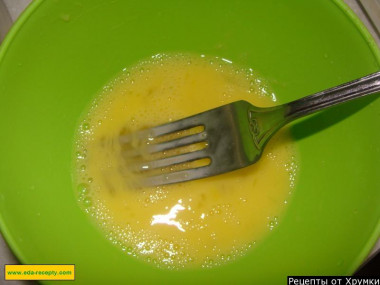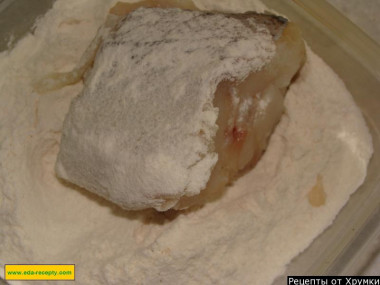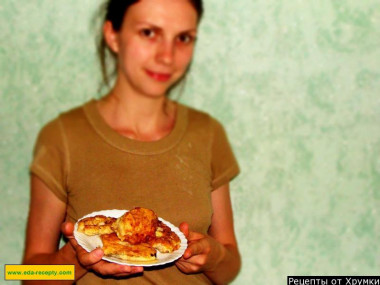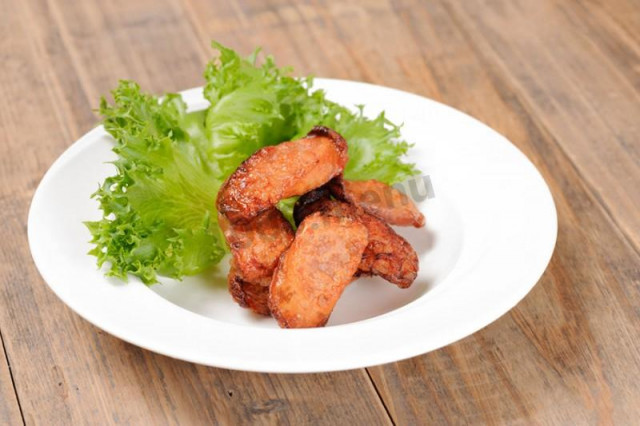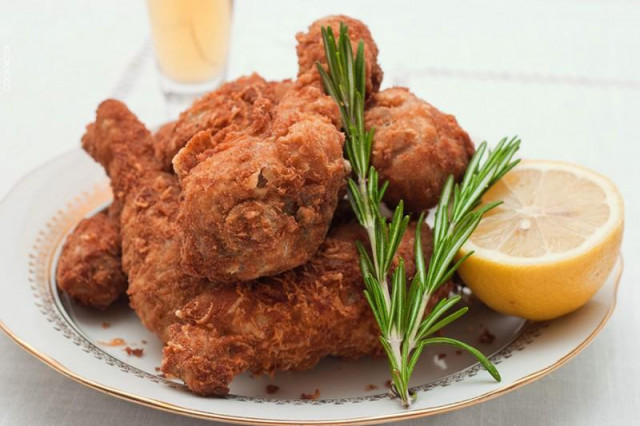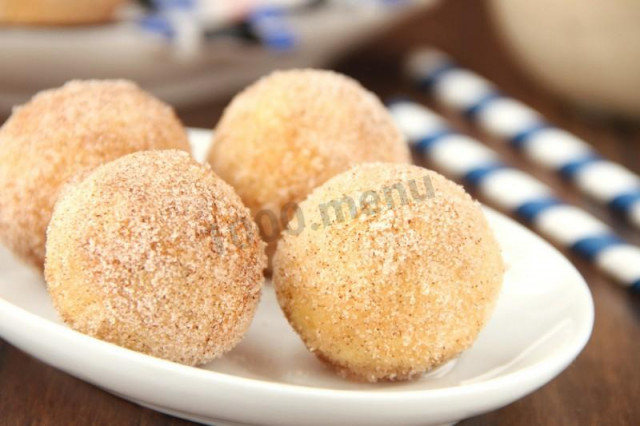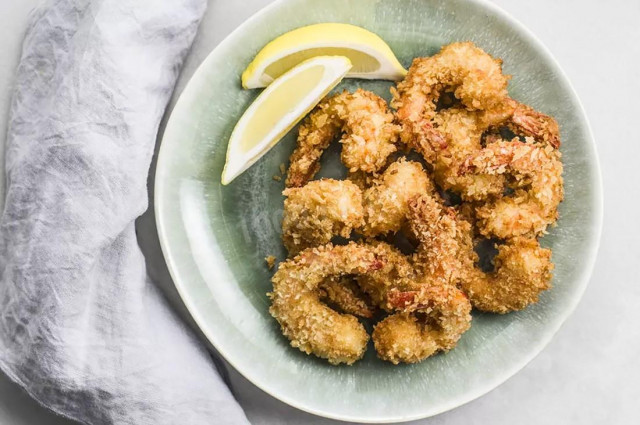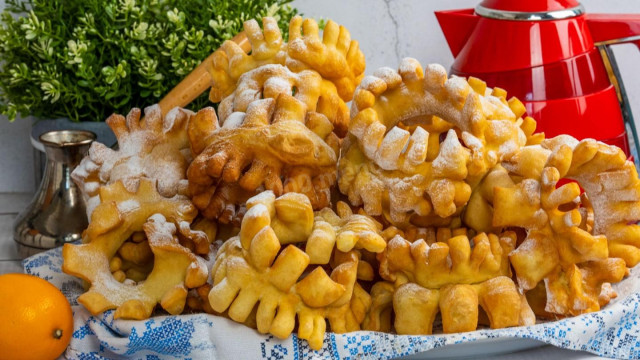Composition / ingredients
Step-by-step cooking
Step 1:
In this recipe I will tell you how to deep fry fish. I hope you like this option. So, we take the frozen hake fillet and cut it into six portions. We put the portions in cold water with the addition of a tablespoon of salt (without a slide) and leave it until it is completely defrosted. Thawed fish need to get rid of excess water. To do this, dry the fillet with a napkin. Then put it in a bowl with milk for half an hour.
Step 2:
After that, we dry the fish again, putting it on a napkin. All excess liquid should drain.
Step 3:
Beat eggs into foam with a fork or whisk.
Step 4:
Fish fillets are plentifully rolled in flour. We do not add salt to the flour, nor do we salt the pieces themselves, because at the initial stage we kept the fish in brine, and it has salted enough during this time.
Step 5:
After that, dip the pieces of fish in the beaten eggs. Due to the fact that we rolled the fish in flour, the egg batter will hold well and will not slip. Deep-fry the fish. To do this, pour corn oil into a deep frying pan in such an amount that it hides the fish steak lowered into it. Fry the fish until golden brown in moderately boiling oil.
Step 6:
We transfer the finished fish from the frying pan to a paper napkin so that excess fat is absorbed.
This dish is served to the table in a warm form, so there is no need to wait until it cools down. For more aesthetics, decorate it with lemon slices and fresh herbs. To make a thicker fish coat, you can dip it in flour, then in eggs and repeat this process again: flour, eggs. Due to the fact that the hake fillet does not contain bones, you can eat this dish and not worry about anything. Personally, I just adore fried fish, of course, I love both salted and pickled fish, but I have a special weakness for fried fish. Potatoes and vegetable salad can be served with it. I am sure that you will like deep-fried hake, and its taste will be remembered for a long time.
Any oils are useful only until a certain temperature is reached - the point of smoking, at which the oil begins to burn and toxic substances, including carcinogens, are formed in it. How to determine the roasting temperature and choose the best oil for frying, and which one is better not to use at all, read here .
If you use ready-made spice mixes, be sure to read the composition on the package. Often, salt is already present in such mixtures, take this into account, otherwise you risk over-salting the dish.
For this recipe, it is better to take not frozen, but fresh fish, otherwise the finished fish risks getting dry.
Caloric content of the products possible in the composition of the dish
- Whole cow's milk - 68 kcal/100g
- Milk 3.5% fat content - 64 kcal/100g
- Milk 3.2% fat content - 60 kcal/100g
- Milk 1.5% fat content - 47 kcal/100g
- Concentrated milk 7.5% fat content - 140 kcal/100g
- Milk 2.5% fat content - 54 kcal/100g
- Lemon - 16 kcal/100g
- Lemon zest - 47 kcal/100g
- Fried hake - 105 kcal/100g
- Boiled hake - 95 kcal/100g
- Hake fresh - 86 kcal/100g
- Salt - 0 kcal/100g
- Wheat flour - 325 kcal/100g
- Chicken egg - 80 kcal/100g
- Refined corn oil - 899 kcal/100g
- Corn oil - 899 kcal/100g

